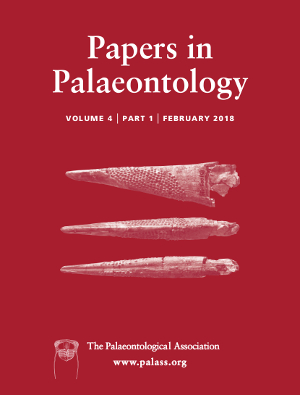Reg. Charity No. 1168330

Phyllocarida (Crustacea, Malacostraca) are among the most diversified and widespread Late Devonian arthropods. Although previous studies mention phyllocarid fossils from Late Devonian (Frasnian and Famennian) deposits of the Holy Cross Mountains of south‐central Poland, phyllocarids from the Kowala quarry have not been systematically described. Two new species are described from Kowala strata: Echinocaris bisulcata sp. nov. characterized by oval carapace valves with a short hinge line, cone‐like tubercules on the carapace anterior lobe, two pronounced lateral sulci (ventral and median) and two pairs of short spines on every abdominal segment; and Montecaris marynowskii sp. nov. characterized by two pairs of robust abdominal spines, a telson that is shorter than furcal rami, distal parts of which are parallel to the telson, and a body length approximately four times longer than the telson length. Additionally, an isolated furca identified as Dithyrocaris sp. is described herein. Damage observed in the holotype specimen of Montecaris marynowski sp. nov. is consistent with a healed injury, possibly caused by predatory fish. Notes concerning the global occurrences of montecaridids, echinocaridids and the genus Dithyrocaris in the Late Devonian are also provided.